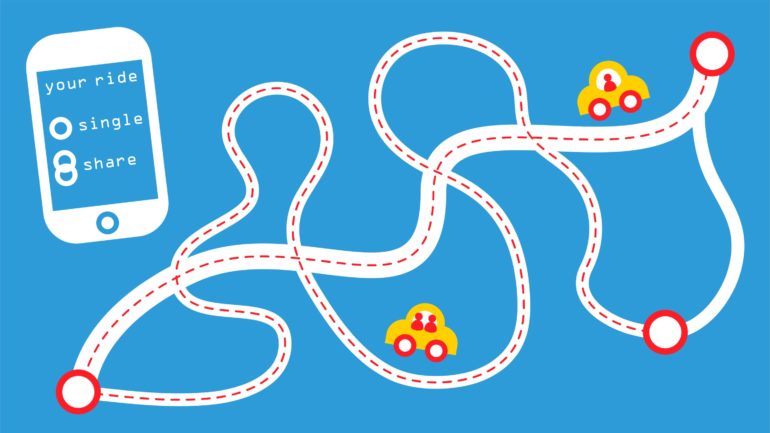An interdisciplinary research team from TU Dresden at the Chair of Network Dynamics headed by Prof. Marc Timme has studied people’s motivation to use “shared mobility” offers.
In ride-sharing, trips of two or more customers with similar origins and destinations are combined into a single cab ride. The concept can make a significant contribution to sustainable urban mobility. However, its acceptance depends on human needs and behavior. For example, while shared rides typically offer a financial advantage, passengers might suffer drawbacks in terms of comfort and trip duration. These factors give rise to different adoption behaviors that explain usage patterns observed in 360 million real-world ride requests from New York City and Chicago in 2019. The study has now been published in the journal Nature Communications.
Ride-sharing (or ride-pooling) is most efficient in places with high demand and a large number of similar ride requests. Still, it has been difficult to answer if and under what conditions people are actually willing to adopt ride-sharing. In their study, the researchers decipher the complex incentive structure underlying the decision of whether or not to adopt ride-sharing. In a game-theoretic model, they describe the sharing adoption of all users who book rides from the same location.
The researchers demonstrate how interactions between those individuals lead to two qualitatively different patterns of acceptance. In one, willingness to share rides is consistently high. In the other case, however, the willingness to share rides decreases as the overall demand for rides increases. If there are only few users in the system, the number of ride-sharing bookings increases with the number of ride requests, yet if there are many users, the usage levels out. The relative amount of shared ride requests therefore decreases—despite optimized routing with shorter detours for the passengers when demand is high.
“Passengers speculate on being able to take advantage of the cheaper fare when sharing a ride, but they actually hope to be transported alone and thus directly from A to B due to low demand for rides,” explains David Storch, a doctoral student at the Chair of Network Dynamics and lead author of the study. When demand is high, for example during typical rush hours, the prospect of being transported as a single passenger is lower—”Passengers almost certainly lose comfort as they share a ride. They tend to book the more expensive fare more often to travel alone.”
In an analysis of more than 360 million real trip requests in New York City and Chicago, the researchers were able to identify the demand patterns they had previously found in their model, supporting the validity of their findings. The analysis shows that depending on the starting point of the trip, both adoption patterns exist in parallel in the two cities. Malte Schröder, research associate at the Chair, interprets the results as follows: “Since both adoption patterns coexist in cities, a moderate increase of the financial incentives is probably already sufficient to strongly increase the acceptance of ride-sharing in other places and for other user groups.”
Lyft and Uber out to be everyday rides with passes
More information:
David-Maximilian Storch et al, Incentive-driven transition to high ride-sharing adoption, Nature Communications (2021). DOI: 10.1038/s41467-021-23287-6
Provided by
Dresden University of Technology
Citation:
Research team investigates ride-sharing decisions (2021, June 1)
retrieved 1 June 2021
from https://phys.org/news/2021-06-team-ride-sharing-decisions.html
This document is subject to copyright. Apart from any fair dealing for the purpose of private study or research, no
part may be reproduced without the written permission. The content is provided for information purposes only.



